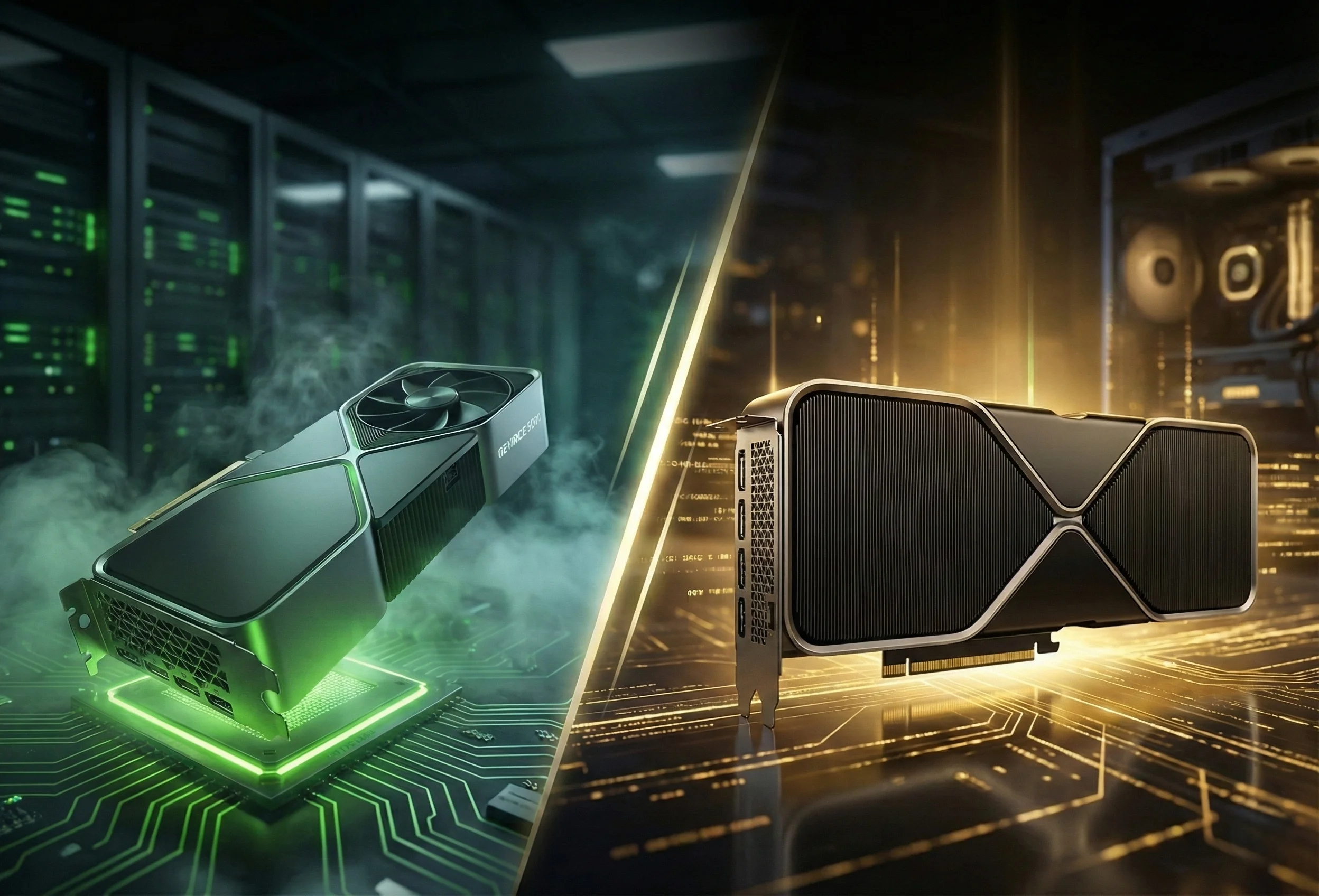Nvidia RTX 6000 PRO (Blackwell) vs. RTX 5090: Choosing the Right GPU for You
With Nvidia's latest GPUs hitting the market, the question on everyone's mind is: which one should I buy? The RTX 6000 and RTX 5090 are both powerhouses, but they cater to different needs and budgets. The RTX 5090 targets gamers and creative professionals seeking top-tier performance, while the RTX 6000 is designed for professionals needing reliability, certified accuracy, and sustained throughput for AI or rendering tasks.
This guide dives deep into the key differences between these two GPUs, helping you make an informed decision.
Architecture and Specifications
Both the RTX 5090 and RTX 6000 are built on Nvidia's Blackwell architecture, bringing significant upgrades in ray tracing cores, Tensor performance, and FP8 compute. However, there are crucial differences in their specifications:
| Feature | RTX 5090 (GeForce) | RTX PRO 6000 (Workstation) |
|---|---|---|
| Architecture | Blackwell | Blackwell |
| CUDA Cores | 21,760 cores | 24,064 cores |
| Memory | 32 GB | 96 GB |
| Memory Type / ECC | Non-ECC GDDR7 | ECC-enabled GDDR7 |
| FP32 Performance | ~104 TFLOPs | ~126 TFLOPs (theoretical) |
| Power (TGP) | 575 W | 600 W |
| Driver Type | GeForce Game Ready | NVIDIA Enterprise Driver |
The RTX PRO 6000 has more CUDA cores and significantly more memory with ECC, making it better suited for demanding professional workloads. ECC memory is crucial for applications where data integrity is paramount, such as scientific computing and financial modeling.
Performance
The RTX 5090 excels in gaming and tasks that benefit from high clock speeds and bursty workloads. Benchmarks show it delivers substantial performance improvements over previous generations. For example, in gaming scenarios, the RTX 5090 can provide a 20-30% FPS increase compared to the RTX 4090.
However, the RTX PRO 6000 shines in sustained workloads like large-scale AI inference, model fine-tuning, and rendering. Its ECC memory and optimized drivers ensure consistent and reliable performance over extended periods. The RTX 6000 also supports NVLink, enabling multi-GPU scalability for even more demanding tasks.
AI and Compute
For AI developers, the RTX PRO 6000 offers several advantages:
- NVLink 5.0:. Unlike the RTX 5090, which has dropped NVLink support, the RTX 6000 allows you to chain up to four cards together. This effectively gives you a single massive GPU with nearly 400GB of memory
- Stable Software: Unlike the gaming drivers, the Enterprise drivers are locked down to ensure that if you train an AI model today, you get the exact same result next week, no random errors.
- Memory error correction: Imagine running a calculation for 3 weeks straight. A single cosmic ray could flip a bit and ruin the result. The RTX 6000's ECC memory prevents this catastrophe, which is why scientists buy it over the 5090. This is especially important when running AI models for extended periods, as it prevents errors that could compromise the accuracy of your results.
Rendering and Content Creation
Content creators using applications like Omniverse, Blender, Maya, or DaVinci Resolve should consider the RTX PRO 6000 for its certified stability and rendering accuracy. It offers official ISV certifications (Autodesk, Adobe, Dassault, SolidWorks) and driver tuning for consistent results. While the RTX 5090 might push higher frame rates in games, the PRO 6000 is engineered to prevent the tiny rendering glitches or color shifts that can ruin a professional render.
Cost and Target Audience
The RTX 5090 is around $2,000 - $2,500, while the RTX PRO 6000 commands a premium, costing around $7,500 - $10,000. This price difference reflects the PRO 6000's ECC memory, longer warranties, and enterprise driver certification.
Consider these recommendations based on your use case:
- AI Research / LLM Inference: RTX PRO 6000
- 3D Rendering & Visualization: RTX PRO 6000
- Gaming & Game Development: RTX 5090
- Content Creation (Video / Streaming): Depends on workflow
- CAD / Simulation / Scientific: RTX PRO 6000
Power Consumption
The RTX 5090 has a rated power consumption of 575W, while the RTX PRO 6000 is rated for 600W. Both cards require robust cooling solutions and a high-wattage power supply (at least 1000W) to operate safely and efficiently.
Conclusion
Both the Nvidia RTX 6000 and RTX 5090 are exceptional GPUs, but they cater to different needs. The RTX 5090 is an excellent choice for gamers and creative professionals seeking top-tier performance in gaming and content creation. The RTX 6000 is the superior option for professionals who require reliability, certified accuracy, and sustained throughput for AI, rendering, and other mission-critical tasks.
Choosing the right GPU depends on your specific requirements and budget. Assess your workload, consider the features that are most important to you, and make an informed decision based on your needs.

